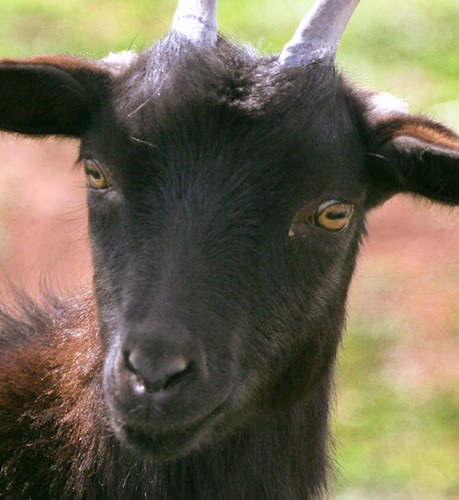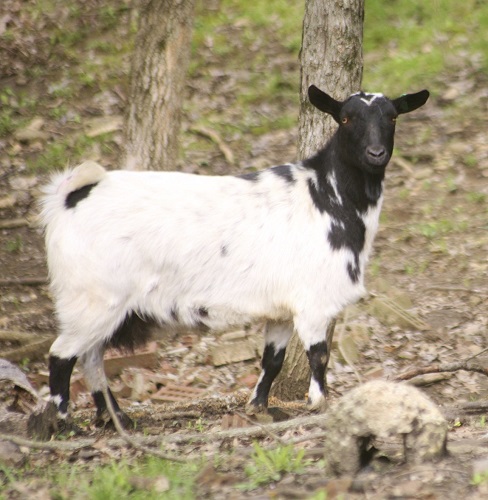Fainting goats are a breed of goats that undergo genetic mutation leading them to have congenital myotonia or fainting. This is a condition that a baby goat receives from its parents and, so far, has no cure for it. Fainting goats are also known as Tennessee goats, referring to the place from which they are believed to originate. Read on to know more about fainting goats and the reason behind them fainting.
Origin of Fainting Goats
There are many theories claiming to be the origin stories of fainting goats, among which the Tennessee theory is the popular one. According to this, these goats are believed to have originated in the 1800s. The first written documentation of their existence too is thought to be in the 1880s. Fainting goats are said to be brought to Tennessee by a farm laborer from whom his employer brought all the goats, thus starting their lives in the new place. Even then, the right spot of their origin is still unknown, and whether their mutation has been in place for long or has it been spontaneous too remains a question.

Another popular belief is that these goats could be the descendants of African Pygmy goats, who were transported to America during the 1600s. Yet another theory is that fainting goats are the result of crossbreeding Tennessee landrace goats and French Alpine goats. Such cross breeding was practiced in the 1900s. Still, the origin story of Tennessee goats or fainting goats is a mystery that remains in the dark.
Why Do They Faint?
The genetic mutation fainting goats have is called myotonia congenita and is a condition that can affect many animals as well as humans. While the condition can be helped in humans with medication and physiotherapy, fainting goats are specifically bred for their strange genetic situation. A fainting goat can get myotonia congenita either from a parent who has it as a dominant trait or from two parents who have the mutation as a recessive trait.
The fight or flight response mechanism becomes delayed in goats having congenital myotonia. When a situation strikes, the sensory organs send messages to the brain, which the brain sends as electric signals to the limbs to act. This process causes a momentary tensing of the voluntary muscles, which typically lasts for not more than a second before relaxing and reacting. But in the case of fainting goats, these muscles stay tense for about 10-20 seconds before relaxing. Their genetic difference at the cellular level only decodes the brain signal halfway through, skipping the part where it says to relax and move.
So, when they confront a startling situation, their bodies stiffen up, and they fall over, making it a fainting episode. Because of the condition, these goats do not jump fences and cannot stand loud noises or movements, as the reaction it will have would not be favorable to them. They recover soon from the episode and return to normal in a few seconds.
Characteristics of Fainting Goats
Apart from the part where they faint when frightened, myotonic goats are pretty hard animals. They adapt well to different climates and areas as well as are disease-resistant. They can live with little food and water and are good survivors. Fainting goats make good pets and are easy to keep because of their gentle and calm nature. They can live for about 10-12 years, though there have been instances when a few have lived up to 15 years as domestic goats.

Myotonic goats are easy to distinguish because of the distinct features that keep them apart from others. They have a straight face, sometimes accompanied by bulging eyes or foreheads. Most of them spot horns. Their medium-sized ears often stay horizontal and have ripples around the middle. Fainting goats come in different colors and coat types, depending on the parents the breeders choose for producing them. These goats are stiff in nature and have a higher muscle-to-bone ratio than other breeds of goats.
What are Fainting Goats Used for?
Fainting goats are being bred for their condition, though it can be avoided, through selective breeding through proper screening. They have been bred through the ages and still continue to produce many baby goats with myotonia congenita. Since these goats are easy to manage and are amusing, people choose to raise them as pets in many regions. Their appearance and temperaments also make them fit to be good pets. They are also raised for their milk.
In the past, these animals were used to accompany herds and use them as baits to protect the other goats from predators. When attackers approach, since fainting goats freeze and fall over, they become easy targets for the predators, who will then not go after the others in the herd. Hence, the protection of the herd could be ensured at the cost of a fainting goat. Though this is not in practice these days, farmers in the past are said to have found good use of myotonic goats for this purpose.
Fainting Goats and Their Diet
Fainting goats are strong animals who can survive even on scarce vegetation. They are grazing animals that love to eat plants, grass, and shrubs. They can also survive on hay and pellets if the situation asks for it. Leafy vegetables and alfalfa hay, if fed, could help them in keeping their muscles strong and healthy. Since blood variations in blood sugar levels can trigger their fainting episode, keep them from having fruits and sweet vegetables. They also require lots of clean drinking water, especially if they have just recovered from an episode of fainting.
Predators and Threats
Because of their condition, myotonic goats become the easiest prey to predators, if they are to attack your farm. They will not be able to move and faint over, making it easier for the predators to feed on them. Common predators include coyotes, foxes, bears, dogs, and other large animals. Installing strong and sturdy fences that prevent predators could protect the goats from being preyed upon. You could also try not to keep them near areas that are accessible to wild animals and keep a close eye on them to protect them from predators. Other than that, fainting goats are not a threat to themselves as they are fully capable of recovering and going back to normal after an episode of fainting (unless they faint at a height).
Conclusion
The idea of goats fainting could be something that arouses curiosity and amusement. But the fact behind them being so is actually a hereditary genetic condition. Even though congenital myotonia makes them susceptible to predators, it does not compromise with the other traits that make them good pets and farm animals.

![What Are Fainting Goats? [Why Do They Faint?] what are fainting goats](https://donkeyonfarm.com/wp-content/uploads/2023/07/Myotonic_Goat_-_17003671880_11zon.jpg)

![Can Goats Swim? [Plus How to Treat a Wet Goat?] can-goats-swim](https://donkeyonfarm.com/wp-content/uploads/2023/06/can-goats-swim-270x180.jpg)
![How to Care for a Pregnant Goat [Tips to Keep Them Happy] how to care for a pregnant goat](https://donkeyonfarm.com/wp-content/uploads/2023/08/how-to-care-for-a-pregnant-goat_11zon-270x180.jpg)

![How Much Space Does a Pygmy Goat Need? [Plus Some Facts] how much space does a pigmy goat need](https://donkeyonfarm.com/wp-content/uploads/2023/07/pygmy-goat-1-270x180.jpg)